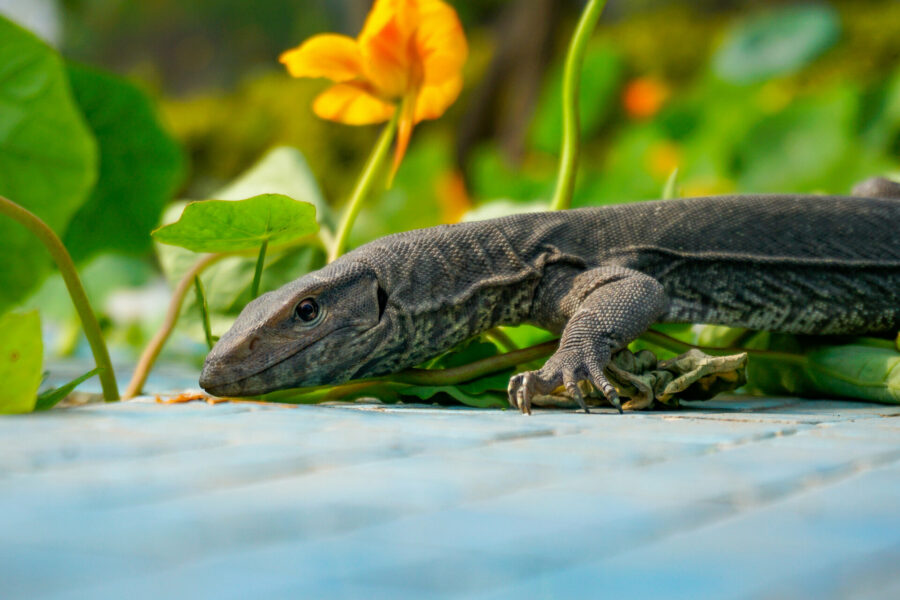Each year, July is when we welcome monsoons with a sigh of relief. As the season bids goodbye to the harsh summers, it also replenishes our water sources and nourishes our agricultural fields. And it’s not just us who eagerly await the arrival of rains — rain awakens nature around us, birds chirp, seeds sprout, flowers blossom, and greenery takes over. Numerous magnificent creatures from the natural world come out of their hiding places in this season as part of their life cycles.
One can witness various interesting phenomena, right there in their backyard!
Tiny Critters
Insects often enter a state of temporary dormancy known as ‘diapause’ when they are surrounded by unfavourable conditions. However, their activity significantly escalates after rain spells. A large number of butterfly species can be spotted in congregations which include Plain tiger, Lime butterfly, and Common emigrant. Bees and moths also engage in extracting nectar from flowers that bloom in rain. Other invertebrates such as ants and beetles appear during or right after rains. Known for their excellent chirps and songs, cicadas emerge once a year, right before the monsoon season. Male cicadas ‘sing’ to attract their female counterparts.
Invertebrate species like worms and snails generally thrive in cool and moist environments. They find safe homes in wet soil, shrubs, and logs. Earthworms can frequently be spotted crawling out of their water-logged burrows to catch some air. Showers also compel other animals like crabs to venture out from their hiding spots. These critters are preferred meals for reptiles, amphibians, birds, as well as mammals, who follow them as they come out in the rains.
Croaking Amphibians
Often considered indicators of the weather forecast, frogs and toads can easily be spotted in rain puddles. From bush frogs and tree frogs, to ornate toads and gliding frogs – amphibians indeed enjoy the pitter patter! Indian Bullfrog is known to come out of hibernation as the monsoon arrives in the country. The feeding activity of frogs and toads significantly increases due to prevalence of fresh vegetation and insects. Moreover, it is in the monsoon that they mate with their partners.
Male frogs and toads create advertising calls to attract females, which indicate their health and help females choose a fitting mate. The season sure brings about a romance in them! Rains ensure frogs and toads get sufficient microhabitat spaces for breeding, without them drying. They are also able to care for and carry their eggs through ponds and small streams.
Rulers of the Sky
Another group of animals that are extremely active during the monsoon season are birds! Common species such as bulbuls, cuckoos, robins, barbets, sparrows, and babblers are found perching in our gardens. It is believed that the Pied cuckoo is the harbinger of rain. The local migratory bird gradually spreads over major parts of India as monsoon arrives. Even aquatic birds including pelicans, storks, storks, herons, ducks, coots, and grebes become a common sight.
As the weather becomes cooler, flocks of hundreds of birds — residents or migrants — begin congregating. They receive abundant nesting as well as feeding resources. Many birds lay their eggs just before the monsoon season. It is also the best time for parent birds to extract an ample amount of scurrying food like insects and worms for their chicks!
Creeping Reptiles
Reptiles like lizards and snakes can commonly be spotted in gardens during monsoon. This is because the rains generally flood their living spaces, offer an ample amount of prey, and the season is most suitable for mating. Thus, reptiles may often be encountered seeking refuge in buildings, under dense thickets, or in rocks and crevices.
While venomous coral snakes spend most of their time burrowed or in hiding, they surface only during the monsoon season. Malabar pit viper is also frequently encountered on rocks near water bodies in the Western Ghats. Monitor lizards and Fan-throated lizards are carnivorous species that rely upon small animals that form an excellent source of food in the rains.
One can even find turtles steadily trudging through vegetation or on roads. For instance, Leith’s softshell turtles are commonly spotted near rivers when it begins to rain. During monsoon, spotting a reptile in the neighbourhood is therefore highly likely.
Wildlife SOS frequently receives calls from all around the country to rescue these animals from urban landscapes. If you come across any wild animal in distress, please contact our Rapid Response Unit immediately:
Delhi NCR – +91-9871963535
Agra & Mathura in Uttar Pradesh – +91-9917109666
Vadodara, Gujarat – +91-9825011117
Jammu & Kashmir – +91-7006692300, +91-9419778280





